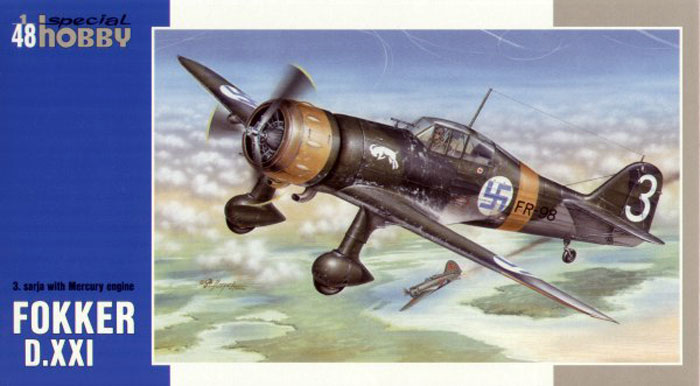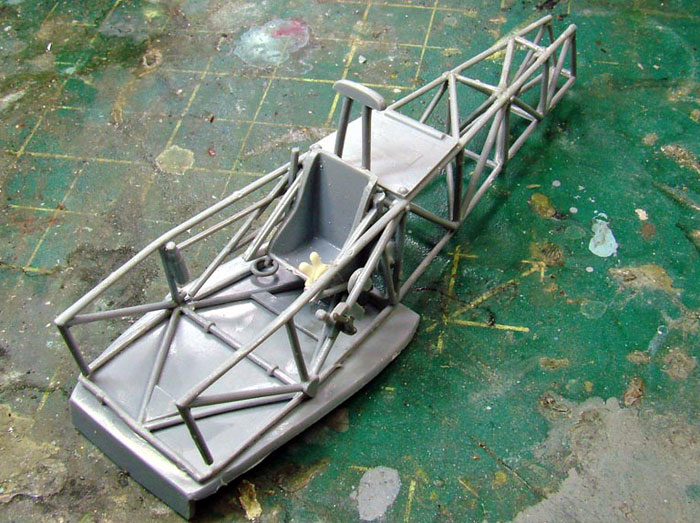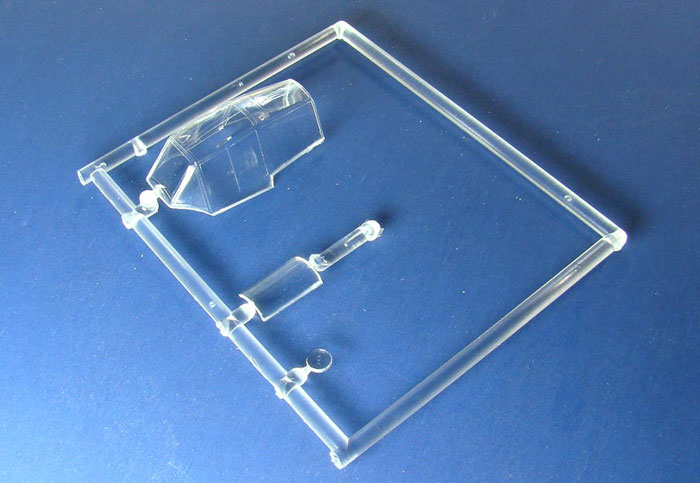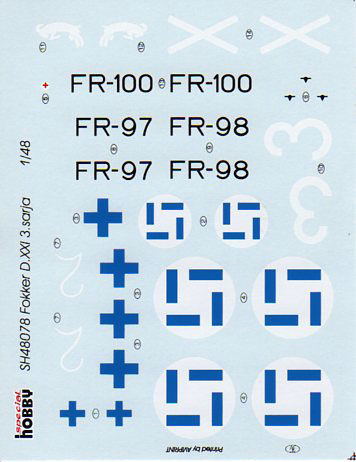Fokker D.XXI III Series
Finnish Air Force

Special Hobby, 1/48
scale
S
u m m a r y |
| Catalogue Number: |
Special Hobby Kit No. SH 48078 - Fokker D.XXI III Series Finnish Air Force |
| Scale: |
1/48 |
| Contents and Media: |
87 parts in grey styrene, 3 parts in clear injection molding, 25 parts in cream colored resin and 30 etched metal parts. Instructions and decal sheet for four aircraft. |
| Price: |
USD$43.20 on line from Squadron.com
GBP17.45 available online from Hannants
|
| Review Type: |
FirstLook |
| Advantages: |
Flash free, provides parts to make wheel or ski equipped versions, and early and late style horizontal stabilizers. |
| Disadvantages: |
Need to drill out windshield and make a new gun sight. |
| Recommendation: |
Highly Recommended |
Reviewed by
Steven "Modeldad" Eisenman

Special Hobby's 1/48 scale Fokker D.XXI Finnish Version is available online from Squadron.com
The Fokker D.XXI was initially developed in response to a request from the Royal Netherlands Indies Army (KNIL) for a rugged and easily maintained fighter aircraft. Even thought it was perceived to be of obsolete design, Fokker went forward anyway with a prototype, only to have the KNIL have second thoughts. It was then taken under considered by the Dutch as a home defense fighter.
Seeking to keep its losses to a minimum Fokker took the aircraft on the road looking for paying customers. The first orders for the D.XXI came from the Finnish government on 18 November 1936.
The first order was for seven Dutch Fokker built Series I aircraft. These were delivered in November 1937 and bore the Finnish serial numbers FR-76 – FR-82. These aircraft were equipped with Polish built PZL Mercury nine cylinder radial engines. Armament was to be two 7.9 FN Browning machine guns in the fuselage and one more in each wing. This series did not have the “rear window’.
Finland received a limited license to build 14 D.XXI II Series at the Finnish State Aircraft Factory. These were completed between November 1938 and March 1939 and were given the serial numbers FR-82 – FR-96. These aircraft, and the Series III that followed, had the “rear window” and used Finnish Mercury engines.
Finland then received an unlimited license to construct the Series III D.XXI resulting in an additional 21 aircraft, which were given the serial numbers FR-97 – FR117.
This fully new tooled Fokker D.XXI brought back memories of the first, and my first, Classic Airframes kit, the Fokker D.XXI “The Dutch Defender”, which came out in 1995. Equipped with the kit, the old Aircam book on the Finnish Air Force and an early set of Aeromaster decals for the Finnish D.XXI, I set about to make a quite inaccurate Finnish D.XXI.
The thing I most remember about that the kit was that is was basically a few plastic pieces that encased a whole lot of etched brass. If nothing else, I learned how to work with etched metal parts. I still have one in the stash, and given the weight of the brass, it is probably worth more as scrap metal than the entire kit is worth on ebay.
I recently found a couple of old CA Fokker D.XXIs at a local hobby shop. The only reason that they are still on the shelf is probably because of the amount of fear the kit induced in modelers.
But modelers have no reason to fear or not to build this entirely new tool kit. All the parts are nicely molded in typical Special Hobby soft grey plastic. The surface detail is nicely done and the fabric is also well executed. But, as with most limited run kits, you will need to remove a number of injection stubs from the inside of some pieces.
Unlike the old bend and fold, flat brass cockpit, the Special Hobby kit has a cleanly molded tubular framework for the cockpit and internal structure. Sadly, most of it will be lost from sight once the fuselage goes together.
I started building and writing about the kit nearly simultaneously. Actually, the building got first priority. In assembling the internal structure, anyone with the slightest dyslexic tendency will find the instructions a bit disorienting. But basically, the diagonal vertical pieces go from lower right to upper left (looking forward from the tail) and the horizontal diagonals go from left forward to right rear. Some of these pieces will need trimming to fit. A piece of .035 plastic rod may be good extra material to have on hand.

As for the painting of the cockpit and internal structure, the instructions indicate gray. It is my understanding that gray was used in the Dutch built aircraft. But, I have not been able to positively determine if gray or green was used in the Finnish built D.XXI aircraft. I painted mine with Tamiya Dark Grey.
A note at this point about the etched metal parts, as you will need them in building the cockpit. On the list of parts the etched metal is indicated with a “PE”, but in the actual instructions, they are referred to as “L”.
When I put the two fuselage halves around the completed interior I discovered that some trimming was needed and that the fuselage halves were slightly warped. But this was not much of a problem. By using liquid cement I started at one point on the nose, let it dry, and slowly worked my around the mating surfaces of the fuselage halves. I found that a thin strip of plastic on the inside helped secure the fuselage at the point between the main canopy and the rear window.
The engine is nicely molded in resin with separate cylinders and support arms and etched metal push rods. When cutting the cylinders from the molding block take care. The mounting stubs on the cylinders are quite short, and if you cut the cylinders off at the bottom of the cylinders, don’t expect them to fit in the whole in the crank case. Simply glue them to the surface.

Although the engine appears to be designed to fit in the fuselage, take care. The best way is to position the depth within the cowl, then set the whole assembly on. I found I need to glue a piece of 10 thou plastic around the inside the cowl so as to have a secure fit for the engine.
That is as far I have progressed as of this writing. Now back to what’s left in the box.
The kit comes with both wheels and skis. Every marking option can be built accurately as either a wheeled or ski equipped aircraft. Although the marking guide for FR-100 shows it only with wheels, it also used skis. The reverse is perhaps the case with FR-97, which is shown only with skis.
The kit also comes with two types of tail planes. It seems that early on the support wire ran from the fin to near the tip of the tail plane. The hinge line was straight. At some point the tail planes were redesigned and replaced the early tail planes. In the later version the support wire ran from the fin to about midway on the tail plane and there is a distinct hinge. I’m not sure of the reason for this, as so little about this aircraft is in English.
The instructions indicate which aircraft used which tail planes. As to one aircraft, FR-98, I cannot find a picture with the early style, although presumably it would have had them.
The clear parts are quite good and the cockpit canopy fits very well onto the fuselage. There is a problem, however. On the actual aircraft, the telescopic sight went through the windshield. In the kit, it ends abruptly in front of the windshield. To represent it correctly, one would need to drill a whole in the windshield and scratch build a new sight tube.

Although many find a vac form canopy to be an anathema, there are others who may have wished one was also included, so as to be able to open the canopy in the odd way that the D.XXI canopy folded open.
If one wants to properly do FR-100 as pictured, a bit of surgery will be required. It seems at some point in the summer of 1942 a number of aircraft had open slat slots put into the wings. These are similar to those on the Lockheed Hudson. One will need to cut a series of thin slots in both the top and bottom wings. The instructions clearly show the size and location of these open slats.
Markings:
Very simply, there are two aircraft in the full “warpaint” of Finnish Olive Green and Black on top and two markings for aircraft in only Olive Green on top.
But there may be some confusion as to the underside colors. On the aircraft in Olive Green only, the underside was Light Gray. But for the full “warpaint” aircraft, there is an open question: were they also Light Gray or DN Blue.

In the old Suomen Ilmavoimen Historia No. 3A Fokker D.XXI, all the profiles show the aircraft in Light Gray undersides. But, in the newer book in the same series, “Sotamaalaus (warpaint)”, it appears that some of the Olive Green and Black aircraft had Light Gray and some had DN Blue undersides. As for the aircraft for which markings are provided, I do not have an answer as to the correctness of the underside color.
No question about it, I am simply elated to have this kit available.
And it only gets better with the announcement that Classic Airframes will be coming out with the “Dutch Defender” based on the Special Hobby molding (Can we expect a Danish D.XXI with under-wing cannon?). One might notice a smooth cowling that is in the Special Hobby kit, but is not used.
So if you are one of those for whom fear prevented you from doing the old CA kit, fear no more.If you, by chance, have one of the old CA kits, think twice before throwing it out or selling it for scrap. That brass etched set will, perhaps, provide for a lot of fine detail to improve the Special Hobby kit. I have not tested it yet, but those massive brass flaps may, with luck, allow you to drop the flaps on the Special hobby kit.
Highly Recommended.
References
Suomen Ilmavoimen Historia No. 3A Fokker D.XXI; Keskinen and Stenman.
http://www.sci.fi/~fta/fr-fin-1.htm
Thanks to MPM / Special Hobby for
the review sample
Review and Images Copyright © 2008 by Steven "Modeldad" Eisenman
Page Created 27 May, 2008
Last updated
27 May, 2008
Back to HyperScale Main Page
Back to Reviews Page |
